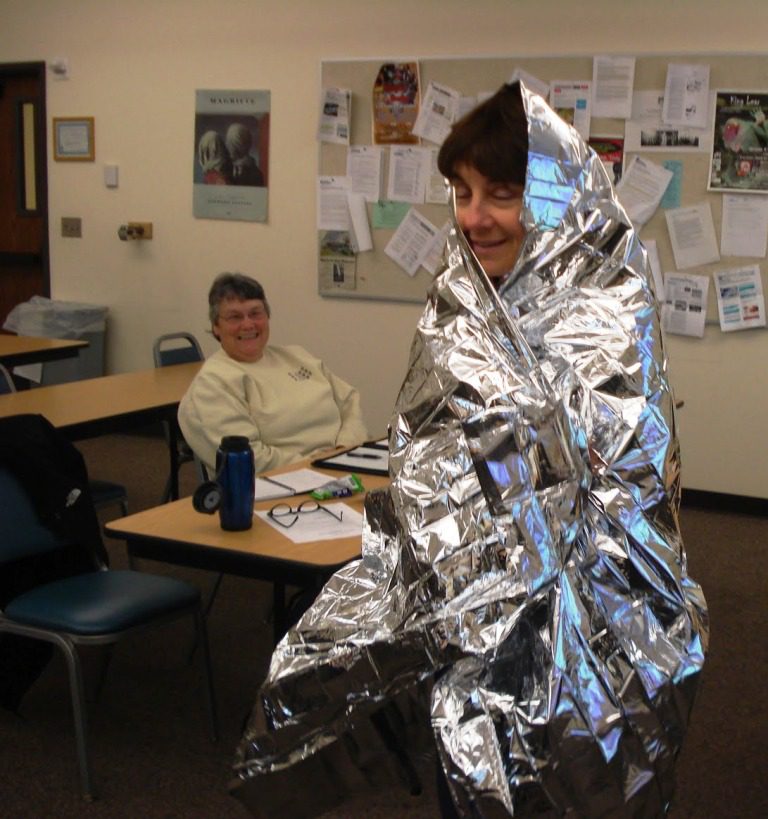(I re-post this every year for Heart Month.)
Every outdoorsman should know the symptoms of a heart attack. Here’s the story of my wake-up call that happened in 2012.
by Leon Pantenburg
I felt fine on the morning of Dec. 13, 2012. But the night before, during my daily 1.4-mile powerwalk with the dog, I felt an unusual shortness of breath, and a tightness in the middle of my chest. That tightness vanished as soon as I stopped.
That was it, as far as symptoms went. Typically, I powerwalk uphill every night, with the intent getting my cardiovascular system going, and elevating my heart rate. A few times the weeks previous, I noticed what appeared to be mild heartburn after eating dinner and I did seem to be getting winded sooner. In retrospect, I should have figured something was going on. But this night, I only made about 100 yards up the usual hill before getting winded.
Luckily, I had taken an extensive Wilderness First Aid class required for Boy Scout leaders in June, and knew that many heart attacks don’t have real dramatic signs.
Long story short, I went into the Bend (Oregon) Medical Center Urgent Care Center the next morning. After a quick exam, I was taken across the street to St. Charles Hospital by ambulance. The next day, I had quadruple bypass open heart surgery. If I hadn’t gone to the clinic when I did, my cardiologist says I would have had a massive stroke or heart attack “very soon.”
Here is the point: If this happened to me, it could happen to you.
For the sake of yourself and a loved one, you must know the symptoms of a heart attack (See the list below). According to the American Heart Association, about a million people have heart attacks in the United States every year.
The scary part is that some people have a heart attack without having any symptoms (a “silent” myocardial infarction). A silent MI can occur in anyone, but it is more common among diabetics.
When the word got out about my heart situation, the overwhelming response among friends, co-workers and family was something to the effect of: “We thought you were in good shape!”
I thought so, too. On my 60th birthday in July, I did 62 pushups in 60 seconds, 12 pullups and power walked two miles. Three days prior to the dog walking incident, I did my usual gym workout of 15 minutes of weight training, 15 minutes on the elliptical machine and 30 minutes on a recumbent bicycle. On the day of surgery, I was five-foot, 10-inches tall, weighed 192 pounds and wore size 32 waist jeans.
I try to eat a healthy diet, take a nutritious lunch to work and frequently walk during my lunch hour. I’ve always been in good physical shape. I started running in high school, and by the time my knees finally wore out, at age 55, had logged about 40,000 miles. I was active in Taekwondo for 30 years, backpacked and bicycled. I thought I was doing everything right.
But that apparently doesn’t mean much when your family has a history of heart disease. My mom died of a massive coronary when she was 60 years old. Her brother, Vincent Wirth, died of the same thing when he was 54. Mom’s sister, Alina Lynch had massive bypass heart surgery. My grandfather, Leo Wirth, died of heart problems.
Everybody is different. Genetically, all of us are dealt a different hand, and we have to play the cards we draw.
But let me urge you: No matter what your family’s medical history is, learn the symptoms of a heart attack. Most importantly, if you suspect ANYTHING is going amiss, call 911 and have it checked out.
Check out the radio interview about heart health on Real-Get Prepared with Vickilynn Haycraft.
Here are some symptoms of a heart attack, according to the American Heart Association:
-
-
- Most heart attacks involve discomfort in the center of the chest that lasts more than a few minutes, or that goes away and comes back. It can feel like uncomfortable pressure, squeezing, fullness or pain. (Chest discomfort can be described in many ways. The discomfort can occur in the chest or in the arms, back, or jaw. If you have symptoms, take notice.)
- Symptoms can include pain or discomfort in one or both arms, the back, neck, jaw or stomach.
- Shortness of breath with or without chest discomfort.
- Other symptoms may include breaking out in a cold sweat, nausea or lightheadedness.
At the first signs of a heart attack, call for emergency treatment (usually 911). The best time to treat a heart attack is within one to two hours of the first onset of symptoms. Waiting longer increases the damage to your heart and reduces your chance of survival.
Please click here to check out and subscribe to the SurvivalCommonSense.com YouTube channel!
-







Leave a Reply